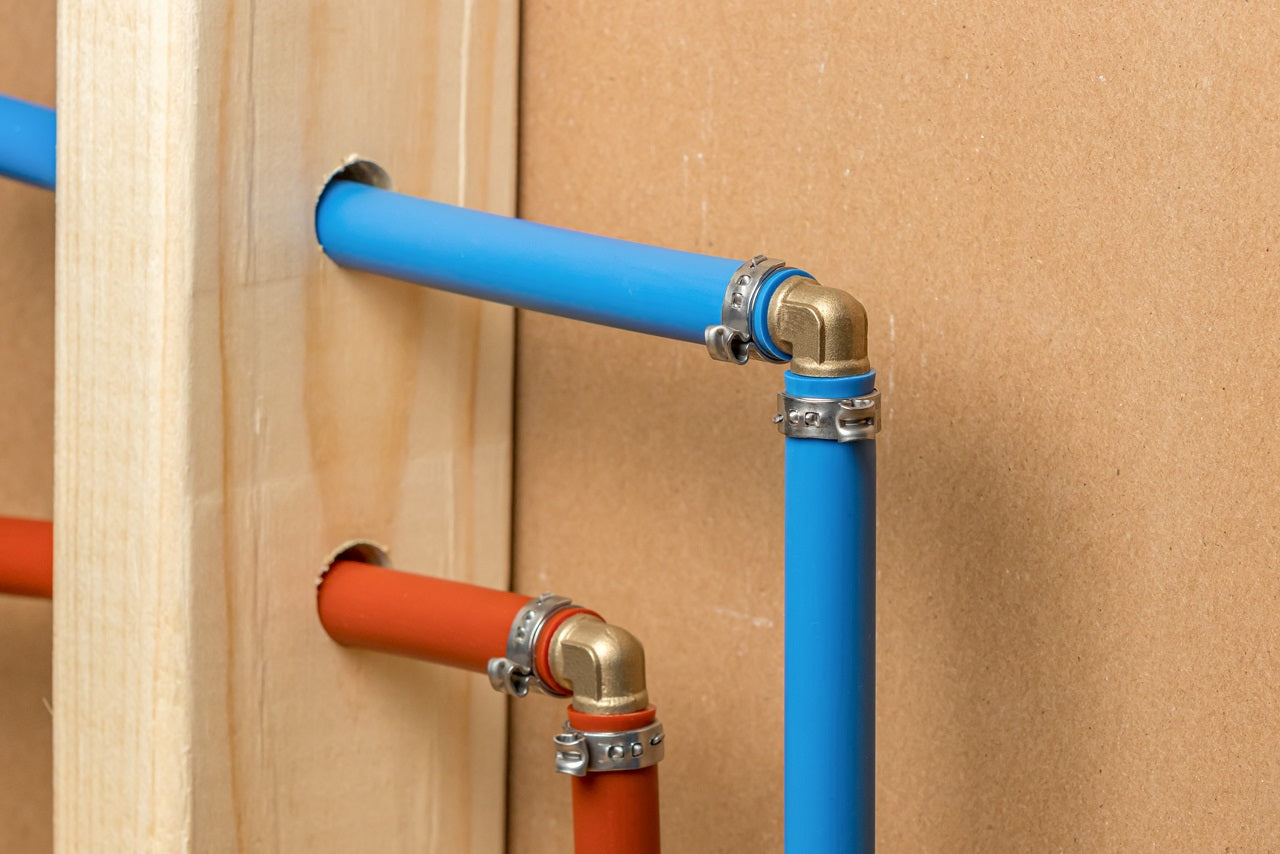PEX plumbing is a popular choice for modern water supply systems, offering flexibility, durability, and ease of installation. A key decision when working with PEX is selecting the right connection method. Two of the most common options are PEX connectors, crimp or compression. Both have advantages and drawbacks, so it’s essential to understand their differences. Below, we compare these two methods, helping you choose the best solution for your plumbing needs.
Understanding Crimp Connections
Crimp connections are among the most widely used methods for securing PEX pipes. This approach requires a PEX crimping tool and metal rings that compress around the pipe to create a tight seal.
Discover our most popular product categories – find what you need today!
- Air to Water Heat Exchangers
- Water to Air Heat Exchangers
- Plate Heat Exchangers
- Oil Coolers & Intercoolers
- Tankless Water Heaters
Benefits of Crimp Connections:
- Cost-effective – Crimp rings and tools are generally more affordable than compression fittings.
- Reliable and durable – When properly installed, crimp connections provide a secure, long-lasting seal.
- Widely compatible – Works with brass and poly PEX fittings, giving more flexibility in installation.
Drawbacks of Crimp Connections:
- Requires precision – The connection must be crimped correctly to avoid leaks.
- Tool dependency – A PEX pipe crimping tool is necessary for installation and repairs.
- Time-consuming removal – If adjustments are needed, crimp rings must be cut off, requiring extra effort.
How Compression Connectors Work
Compression fittings use threaded nuts and rubber seals to secure PEX pipes without needing a PEX crimping tool. These fittings are often used when disassembly or adjustments are required.
Benefits of Compression Connectors:
- Reusable – Can be easily removed and reinstalled, making them ideal for repairs or adjustments.
- No special tools needed – Unlike crimping, no specialized tools are required, reducing upfront costs.
- Great for tight spaces – Easier to install in confined areas than crimp connections.
Drawbacks of Compression Connectors:
- Higher cost – Typically more expensive than crimp fittings, especially for larger projects.
- Less common in permanent installations – More suitable for repairs or temporary plumbing setups.
- Requires proper tightening – If over-tightened, compression fittings may damage the pipe.
Choosing Between Crimp and Compression
Both PEX connectors crimp or compression offer reliable solutions, but the right choice depends on your specific needs:
- For permanent installations – Crimp connections are more cost-effective and widely used.
- For repairs or temporary connections – Compression fittings allow easy disassembly and reuse.
- For DIY projects – Compression fittings may be simpler for beginners due to the lack of specialized tools.
- For large projects – Crimp connections save time and money due to lower material costs.
Required Tools for Each Method
Before beginning your PEX installation, ensure you have the necessary tools:
For Crimp Connections:
- PEX pipe crimping tool
- Crimp rings
- PEX cutter
- Go/no-go gauge (to check crimp quality)
For Compression Connections:
- Adjustable wrench
- Compression fittings
- Pipe cutter
Each method requires a slightly different set of tools, so it’s important to be prepared before installing.
Common Mistakes and How to Avoid Them
Using the wrong technique can lead to leaks or failed connections. Here’s how to avoid common mistakes:
Crimp Connections:
- Incorrect crimping pressure – Use a calibrated PEX crimping tool to secure a seal.
- Damaged crimp rings – Always check for cracks or defects before installation.
- Misaligned fittings – The pipe should be fully inserted into the fitting before crimping.
Compression Connections:
- Over-tightening – This can cause the fitting to crack or weaken the pipe.
- Loose fittings – Ensure the nut is tight enough to create a seal but not so tight that it damages the pipe.
- Improper alignment – Pipes must be straight and properly inserted into the fitting before tightening.
Conclusion: Which Connection Type is Best for You?
When choosing between PEX connectors crimp or compression, consider your project’s needs, budget, and skill level.
- Crimp connections are ideal for permanent, cost-effective installations.
- Compression fittings provide flexibility and ease of removal for temporary or repair work.
Understanding the advantages and limitations of each method can help you make an informed decision and ensure a secure, leak-free PEX plumbing system.

